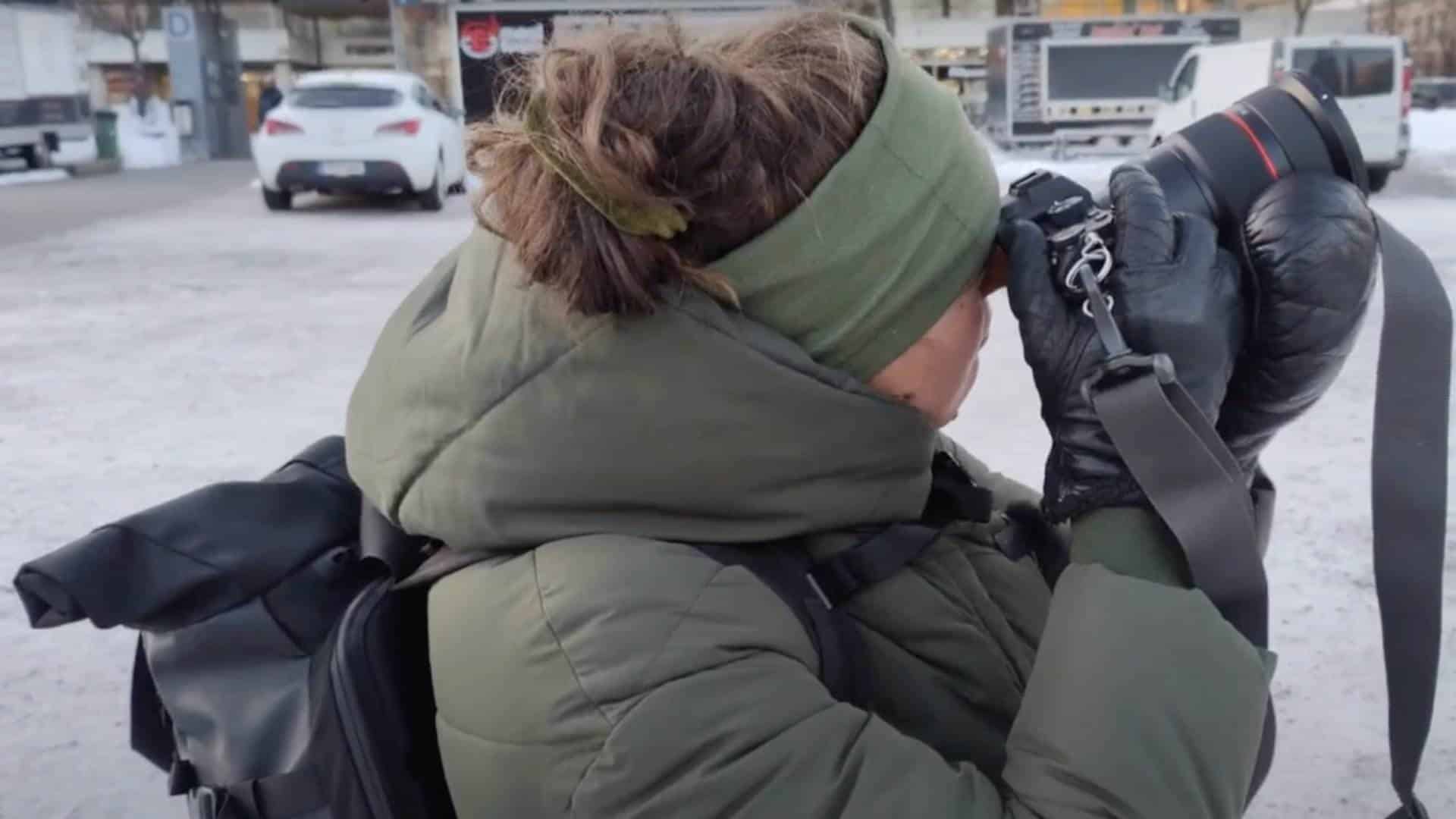Anyone can snap a photo. But taking one that captures the heart of a story? That takes more effort and care. Here’s some advice to get you started.

A photojournalists takes a shot. Photo courtesy of Mobile Stories.
In News Decoder’s Top Tips, we share advice for young people from experts in journalism, media literacy and education. In this week’s Top Tip, Simone Åbacka, a photojournalist for Vasabladet in Finland gives us some advice for taking photos for news story.
You can find more of our learning resources here. And learn how you can incorporate our resources and services into your classroom or educational program or by forming a News Decoder Club in your school.
You want to know what it’s like being a photojournalist? Do you need to take photos to illustrate an article for school publication? We asked Simone Åbacka, a photojournalist for Vasabladet in Finland, to tell us how to get inspired and make sure your photos stand out.
“Photos nowadays are quick and easy to make, but to get a picture that really captures your audience and the viewer, that will require a bit more from you as a photographer,” Åbacka said.
She said that photojournalists have to be out where the action is, she said.
“So if you’re interested in a certain person, you can follow them along for a day or find a street market or a protest or something happening in your area,” Åbacka said. “So look for something that interests you and go and shoot that.”
When you have already done a story or you are asked to provide photos for a story that has already been done, try taking a photo yourself instead of trying to find one online.
If the story is about traffic jams, for example, go out and take a photo of the chaos and the moving cars.
“You want your photos to get attention and be seen,” she said.
Åbacka’s five tips for stand out photos
1. Move around and try different kinds of angles.
2. Look for emotion
3. Look for good lighting
4. Use your environment to tell viewers more about the subject
5. Use a clean background for your subject.
You don’t need a professional camera to take stunning photos, a phone will do. But know its limits, Åbacka said. “It can’t do everything,” she said.
This video was produced as part of News Decoder’s partner project Mobile Stories. Mobile Stories is a publishing tool for young people. It provides guidance on how to create trustworthy news content while upholding journalist ethics.
Watch Simone Åbacka’s video here:
At News Decoder, our editors, educators and correspondents guide students through the journalistic writing process to help them get a first-hand understanding of big global issues and connect across borders. From finding a story to interviewing to editing, we work closely with students to develop their skills using our Pitch-Report-Draft-Revise technique. Student stories are published on our website, social media and in our Educators’ Catalog alongside the work of professional journalists and industry experts.
If you’re an educator looking to engage your students in media literacy programmes, a teacher in need of interesting resources or a writer looking for an outlet, find out more and get in touch at news-decoder.com
Questions to consider:
1. Why would a photo you take be better than one you can find online?
2. What kind of emotion could you capture in a photograph?
3. How can you use your environment to tell viewers more about the subject?
💡 More Tips Like This
This story is part of News Decoder’s open access learning resources.
Whether you’re a secondary student, studying at university or simply interested in learning new things, we can help you build your journalism skills and better understand big global issues.
If you are a student or a member of a News Decoder Club, check out our other learning resources.
If you are a teacher, check out our other classroom resources:
- News in the Classroom
- Educator’s Catalog of classroom exercises
And ask us about joining the News Decoder Club program.
